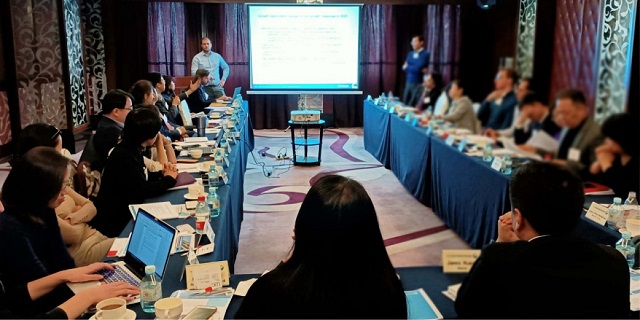This China Center members-only Data Flash is a brief interpretive summary of China’s official monthly economic data release for June 2013. Key points include:
- Last Monday, China released its second quarter GDP growth figures, which registered 7.5 percent, down from 7.7 percent in the first quarter of 2013. The print was in line with consensus market expectations and further confirms the ongoing slowdown the economy is experiencing. Although, sequentially, growth in some sectors of the economy showed signs of stabilizing (at a low rate), our outlook is for y-o-y growth rates to continue easing in the second half of the year to an average of 7.2 percent.
- Bank lending increased significantly in June, to 861 billion RMB from 667 billion in May. While net new bank loans missed the 1 trillion RMB mark that we expected, we believe this was largely due to the fact that the liquidity crunch in June restrained lending toward the end of the month as institutions recalled loans and slowed asset growth to pass regulatory inspections. Lending reportedly picked back up at the beginning of July, with the four largest banks extending 170 billion RMB in the first week of the month, but we view this development largely as a shift of the foregone lending at the end of June.
- As regulators continue to increase supervision over non-bank lending, the banking system is likely to gradually resume its role as the primary funding channel for the economy. June’s liquidity crunch appears to be not only an attempt to press banks to sort out funding issues, but also potentially an attempt at re-intermediating the banking system, before regulators seek to create a clearer separation of shadow lending from the banks. The likelihood of this scenario is further bolstered by the central bank’s announcement on July 19th that banks will no longer be required to observe a floor to lending rates (besides mortgage loans). The abolition of the floor on lending rates appears to be a significant signal that the government may intend to speed up the process of financial reform. Still, the move itself represents little current change since capital is systematically under-priced for China’s largest borrowers.
- Overall fixed asset investment (FAI) slowed in June, growing 20.1 percent y-o-y (ytd) from 20.4 percent through the first five months of the year. However, investment picked up slightly on a sequential basis growing 1.51 percent m-o-m (sa) from 1.43 percent in May. Manufacturing FAI (representing about one-third of total FAI) was particularly weak, growing at 15.1 percent y-o-y – a six-month low.
- The consumer side of the economy showed a mixed picture. Retail sales accelerated on a nominal basis, growing at 13.3 percent y-o-y, up from 12.9 percent in May, but the increase was due in large part to an uptick in inflation, as sales eased on a real basis to 11.7 percent y-o-y from 12.1 percent in May. Meanwhile growth in real per capita urban disposable income was down slightly through the second quarter to 6.5 percent y-o-y (ytd) from 6.7 percent in Q1 – rates significantly below the 9.6 percent growth seen in 2012.
- The industrial sector continued to struggle in June on a yearly basis, with growth in industrial production easing to 8.9 percent y-o-y from 9.2 percent in May. However, on a m-o-m seasonally adjusted basis, growth stabilized somewhat at 0.68 percent, compared to 0.61 percent in May. Meanwhile, upstream prices continued to weigh on the sector with the PPI contracting for the 16th consecutive month.
- External demand was particularly weak in June, with exports contracting by 3.3 percent y-o-y in the month, down from a 0.9 percent expansion in May. Shipments to developed economies performed especially poorly with exports to Japan contracting at 5.1 percent, the U.S. retrenching by 5.4 percent and the EU falling at 8.3 percent – all down or flat from the previous month.
- China’s economic slowdown is clearly continuing and we expect that the remainder of this year will likely see a relatively difficult operating environment, particularly for the industrial sector. However, some targeted policy measures are likely to be forthcoming, particularly aimed at supporting consumers and facilitating credit to struggling small- and medium-sized enterprises in the export sector. Significant risk for MNCs at this juncture is likely to emanate from buyers and suppliers, as many domestic firms will very likely face financial difficulties if and when Chinese corporate deleveraging picks up. From a macroeconomic standpoint, the risk of a policy error remains high, as evidenced by June’s liquidity crunch.













